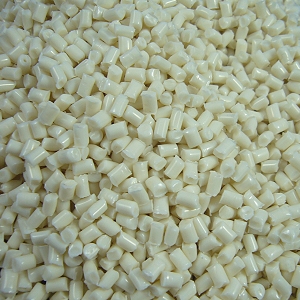Thermoplastic Resins
Thermoplastic polymer resins are extremely common, and we come in contact with thermoplastic resins constantly. Thermoplastic resins are most commonly unreinforced, meaning, the resin is formed into shapes and have no reinforcement providing strength.
Examples of common thermoplastic resins used today, and products manufactured with them include:
- PET - Water and soda bottles
- Polyproplyene - Packaging containers
- Polycarbonate - Safety glass lenses
- PBT - Children's Toys
- Vinyl - Window frames
- Polyethlene - Grocery bags
- PVC - Piping
- PEI - Airplane armrests
- Nylon - Footwear
Many thermoplastic products use short discontinuous fibers as a reinforcement. Most commonly fiberglass, but carbon fiber too. This increases the mechanical properties and is technically considered a fiber reinforced composite, however, the strength is not nearly as comparable to continuous fiber reinforced composites.
In general, FRP composites refers to the use of reinforcing fibers with a length of ¼" or greater. Recently, thermoplastic resins have been used with continuous fiber creating structural composite products. There are a few distinct advantages and disadvantages thermoplastc composites have against thermoset composites.
Advantages of thermoplastic Composites
There are three major advantages of thermoplastic composites. The first is that many thermoplastic resins have an increased impact resistance to comparable thermoset composites. In some instances, the difference is as high as 10 times the impact resistance.
The second major advantage of thermoplastic composites is the ability reform. See, raw thermoplastic composites, at room temperature, are in a solid state. When heat and pressure impregnate a reinforcing fiber, a physical change occurs; not a chemical reaction as with a thermoset.
This allows thermoplastic composites to be reformed and reshaped. For example, a pultruded thermpostic composite rod could be heated and remolded to have a curvature. This is not possible with thermosetting resins. This also allows for the recycling of the thermoplastic composite at end of life. (In theory, not yet commercial)
The third major advantage of thermoplastic composites is that thermoplastic doesn’t use solvent to make the prepreg and thermosetting needs to use solvent to make prepreg. Now European market seriously asks the content of the chemical material especially the solvent. The vaporization of the solvent not only makes the damage of the worker but also makes the pollution of the earth.
Disadvantages of Thermoplastics
Because thermoplastic resin is naturally in a solid state, it is much more diffcult to imprenate reinforcing fiber. The resin must be heated to the melting point, and pressute is required to impregnate fibers, and the composite must then be cooled under this pressure. This is complex and far different from traditional thermoset composite manufacturing. Special tooling, technique, and equipment must be used, many of which is expensive. This is the major disadvantage of thermoplastic composites.

